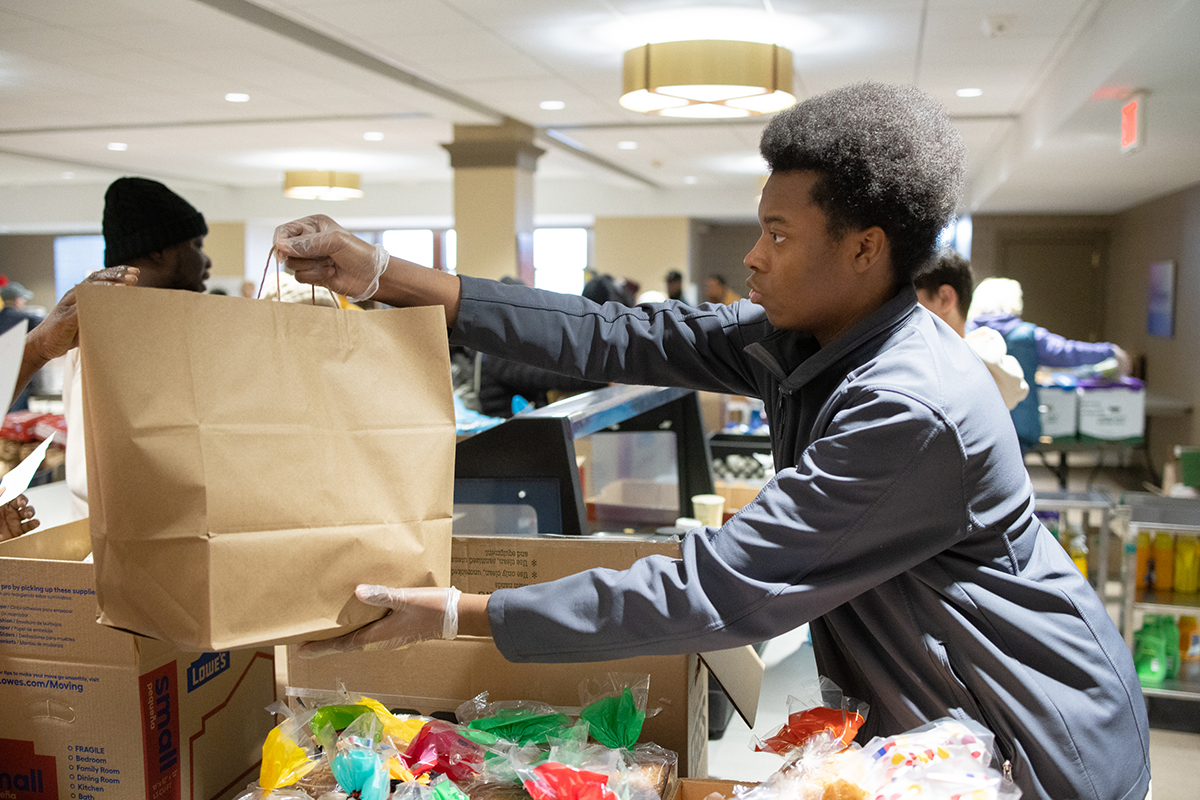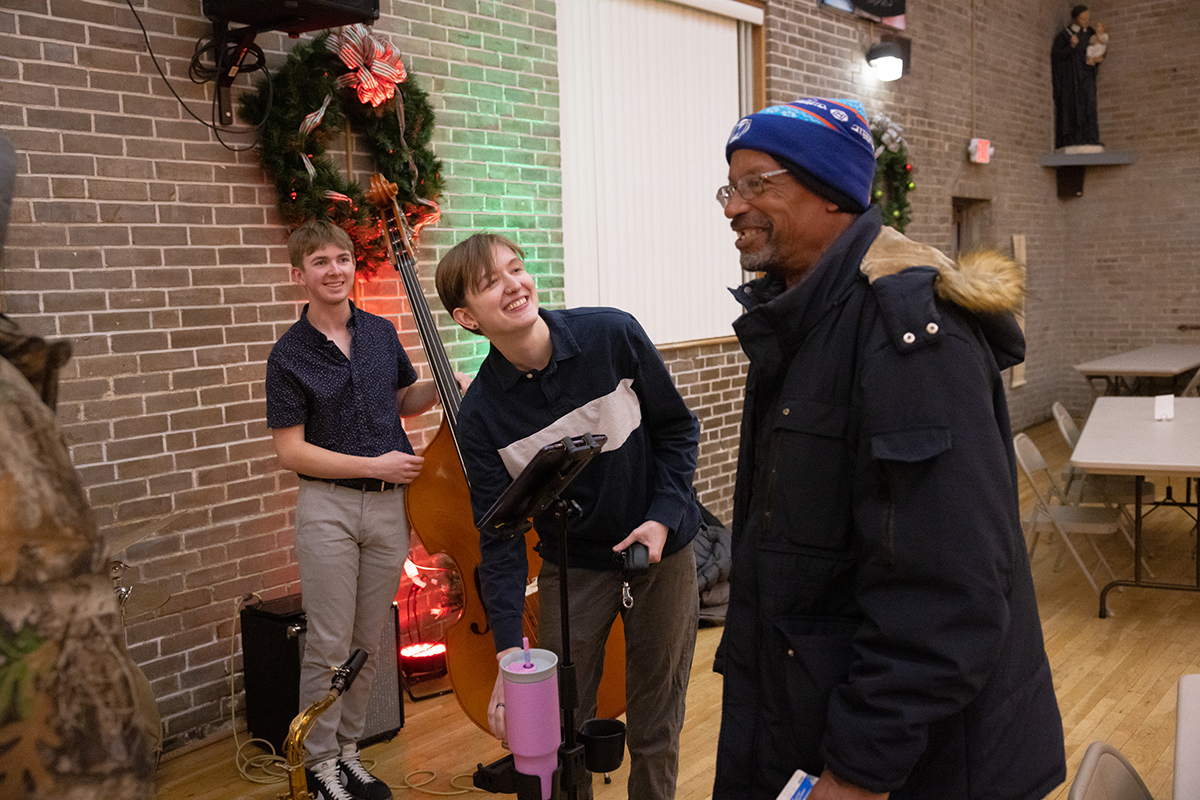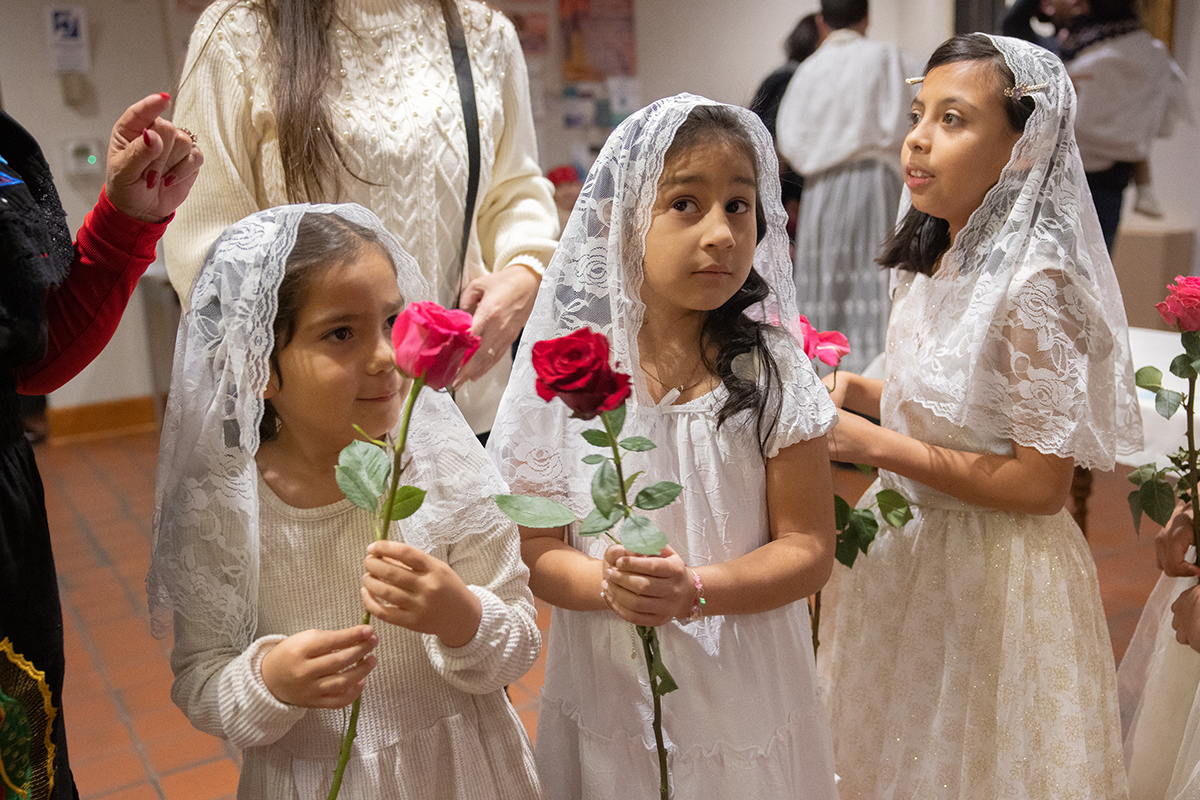St. Joseph Institute for the Deaf embraces rapidly changing approaches to deaf education
As Cora Buck squished a bright green lump of modeling dough between her fingers, she let out a little laugh when a teacher put some on her nose.
“Are you making a snake?” Cheryl Broekelmann asked the wide-eyed child during a recent visit to the classroom. “Is that a scary snake? Say, no, it’s a happy snake. Can you show me your happy face? Happy!” Cora gritted her lower teeth to make a silly smile, eliciting laughter from her teachers.
The two-year-old’s ability to communicate has grown rapidly since birth, when her parents learned via a newborn hearing screening that their daughter had hearing loss.
Krista and Tom Buck came to St. Joseph Institute for the Deaf not long after their daughter’s birth. Cora was fitted for hearing aids, and she started receiving home visits with a therapist. At the age of 2, she began attending the toddler classroom that meets three times a week. The family still receives weekly home visits and monthly audiology services.
The goal, Krista Buck said, is “getting her into mainstream (school)” when it’s time for preschool. “There’s no reason she should be held back by her hearing loss, and St. Joseph is very much focusing on the spoken language.”
Technically speaking, what Buck is referring to is the institute’s focus on auditory-oral — also known as listening and spoken language — education. “Helping families create an environment that is so rich in language and conducive to learning language through the auditory channel is the whole goal,” said Broekelmann, director of operations for the institute’s St. Louis location and an educator for more than 30 years.
Through early intervention, children such as Cora are equipped to learn language the same way a hearing child does, making the transition into the preschool classroom much easier.
St. Joseph Institute recently celebrated a milestone with the expansion of its offices in Brentwood, growing from 1,500 to 7,000 square feet. After the institute closed its residential and academic programs in Chesterfield several years ago, a more centrally located facility was needed. Services are focused on early intervention, in-home therapy or online through the iHear program.
While the approach to deaf education services has shifted dramatically over the years, the institute still carries with it the legacy of its sponsor, the Sisters of St. Joseph of Carondelet, whose first mission in St. Louis was to educate deaf children. In 1836, Bishop Joseph Rosati invited the religious community here, and the following year they opened their first school for the deaf.
“Much has changed in the field of deaf education, and St. Joseph’s has successfully navigated this changing terrain over these many years,” said Sister Roseanne Siebert, CSJ, who served at the institute for almost 50 years as a teacher, supervisor of the primary department and academic program coordinator. She now serves on its board of directors and is co-chair of the board’s academic affairs committee.
When Sister Roseanne began teaching at the institute in the mid-1960s, visual input (reading lips) supported by auditory input was the norm. Children often wore headphones that were connected to a group hearing aid and the teacher wore a microphone to communicate to them.
“Because the children were for the most part profoundly deaf, the amount of auditory input they were able to perceive was minimal,” Sister Roseanne said. “But it supported the visual input and allowed them to acquire spoken language skills.”
As time went on, hearing aids improved and the cochlear implant was developed, allowing deaf children to have greater access to auditory input. The gap between spoken language skills and those of their hearing peers began to close, and they were able to access learning with their hearing peers at younger age levels.
In 2002, another shift occurred when Missouri began requiring newborns to undergo a hearing screening before being discharged from the hospital. Testing has enabled earlier intervention, especially at a time in which a child’s speech and language is first developing.
Because of the changes in services and the rapid development of better listening devices, children progressed quickly within a few years, as opposed to a previous average of 8-10 years. As a result, the institute closed its classroom program for children in kindergarten through eighth grade at the end of the 2013-14 school year. A residential program closed in 2009. That same year, the institute debuted its iHear program, which provides therapy and education services via secure (HIPAA and FERPA compliant) videoconferencing to children in areas in which services are minimal or nonexistent.
The iHear program currently has 42 children enrolled from Indiana, Missouri, Nebraska and California, and one in Russia. Ninety-six percent of children enrolled in the program have increased their standard scores in language as a result of their participation, according to the institute’s records.
With the expansion of its offices, the institute has taken on a more crisp, modern look, incorporating energy-saving LED lighting, touch screens and video-conferencing technology. One of the main corridors features a wall that shows the sisters’ journey over the years in providing deaf education services.
“Everything we did, we wanted St. Joseph to be a part of that journey,” Broekelmann said. “Every inch of this building was really about this journey. Joseph wasn’t afraid to say ‘OK,’ and I think that’s the biggest message. You have to grow with the times. And that’s where we got to where we are today.”
Sister Roseanne said she has no doubt that “this ministry will continue to adapt and change according to the evolving needs of the population served well into the future. As a Sister of St. Joseph I am proud of the way we have continued to effectively serve the dear neighbor through this ministry.”
>> Journey with Joseph
St. Joseph Institute for the Deaf launched a “Journey with Joseph” campaign last fall to raise $410,000 for the expansion and renovation of its Brentwood location. To date, more than $360,000 has been raised toward the goal. To make a contribution, visit www.sjid.org or call (314) 918-1369.
RELATED ARTICLE(S):
As Cora Buck squished a bright green lump of modeling dough between her fingers, she let out a little laugh when a teacher put some on her nose. “Are you … St. Joseph Institute for the Deaf embraces rapidly changing approaches to deaf education
Subscribe to Read All St. Louis Review Stories
All readers receive 5 stories to read free per month. After that, readers will need to be logged in.
If you are currently receive the St. Louis Review at your home or office, please send your name and address (and subscriber id if you know it) to subscriptions@stlouisreview.com to get your login information.
If you are not currently a subscriber to the St. Louis Review, please contact subscriptions@stlouisreview.com for information on how to subscribe.





